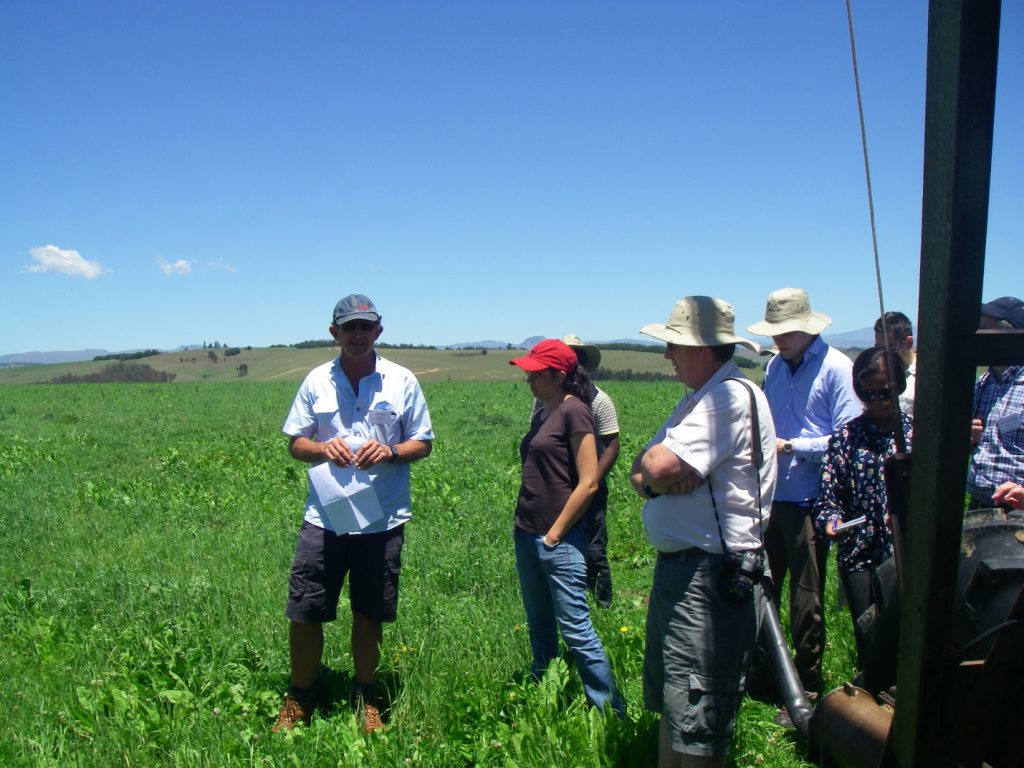
improves soil quality and moisture retention
How do we better look after our water resources?
This was the fundamental question that challenged a group of agricultural and commercial forestry leaders, conservationists and researchers who met in the KwaZulu-Natal (KZN) midlands recently.
The day-long session was hosted and led by KWANALU, the KwaZulu-Natal Agricultural Union. It was supported by WWF, the International Water Security Network, UKZN and the uMngeni Ecological Infrastructure Partnership (UEIP). The catalyst for this ‘meeting-of-minds’ was the recognition that the availability of good quality water in the uMngeni, Mooi and upper-Umvoti River catchments – the cradles sustaining 5 million people – is under pressure. After several years of above average rainfall, this situation is exacerbated by the drought we are currently experiencing.
In his introductory comments, Mike Black, President of KWANALU, emphasised that the conservation of both water and land resources was central to good agricultural practice so farmers were conservationists at heart. That said, it was recognised that agriculture and commercial forestry are the dominant land-users in these catchments and inevitably impact on our water resources. How do we individually and collectively act as better stewards of this resource?
Pieter van Zyl of Potato SA, John Scotcher of Forestry SA, Edsel Hols of the KZN Milk Producers’ Organisation, Graham Armstrong of the Mpofana Irrigation Project, Marilyn Govender of the South African Sugar Association and Anthony Edmonds of the Midlands North Sugar Environmental Committee all made presentations illustrating the progress that their various sectors were making and also the challenges they faced. Angus Williamson and Leon Craig also provided informal inputs on the beef and pork sectors respectively. Arising out of these presentations and the working sessions which followed, a number of key points emerged. Selecting a few:
- The agricultural and forestry sectors, and their sub-sectors have made considerable strides in improving water-use efficiency in their operations. This has been spurred on by environmental concerns, increasing costs of irrigation (especially the energy cost) and more accurate measurements of water usage (what you can’t measure you can’t manage).
- Both the commercial forestry and agriculture sectors are highly regulated in terms of water use – the Water Act, Biodiversity Acts and Conservation of Agricultural Resources Act all play a role. However, opportunities to self-regulate and self-govern for collective benefit remain and should be encouraged.
- Key to success was effective sector leadership, technological improvement and innovation, improved collaboration with other sectors (municipalities, industry, communal areas) and along sector supply chains, improved communication and education, and external facilitation.
In conclusion it was agreed that conservancies, irrigation boards, water user associations and catchment management fora all had a role to play in supporting efforts, and that KWANALU had the necessary structures (farmers’ associations and others) to engage, but would require external support from organisations like WWF to facilitate various processes. It was also agreed that SUSFarms – a sustainable farming standard developed for the cane sector – could be applied in other sectors and that intersectoral collaboration could assist in this process. Finally, Dr Bimo Nkhata of the International Water Security Network identified the research areas that might support improved water stewardship by the various sectors and sub-sectors. These included:
- Improving our understanding of the nature of interactions between stakeholders.
- Identifying the incentives that can play a role in addressing water risk.
- Understanding the institutional arrangements and enabling environment for self-regulation.
